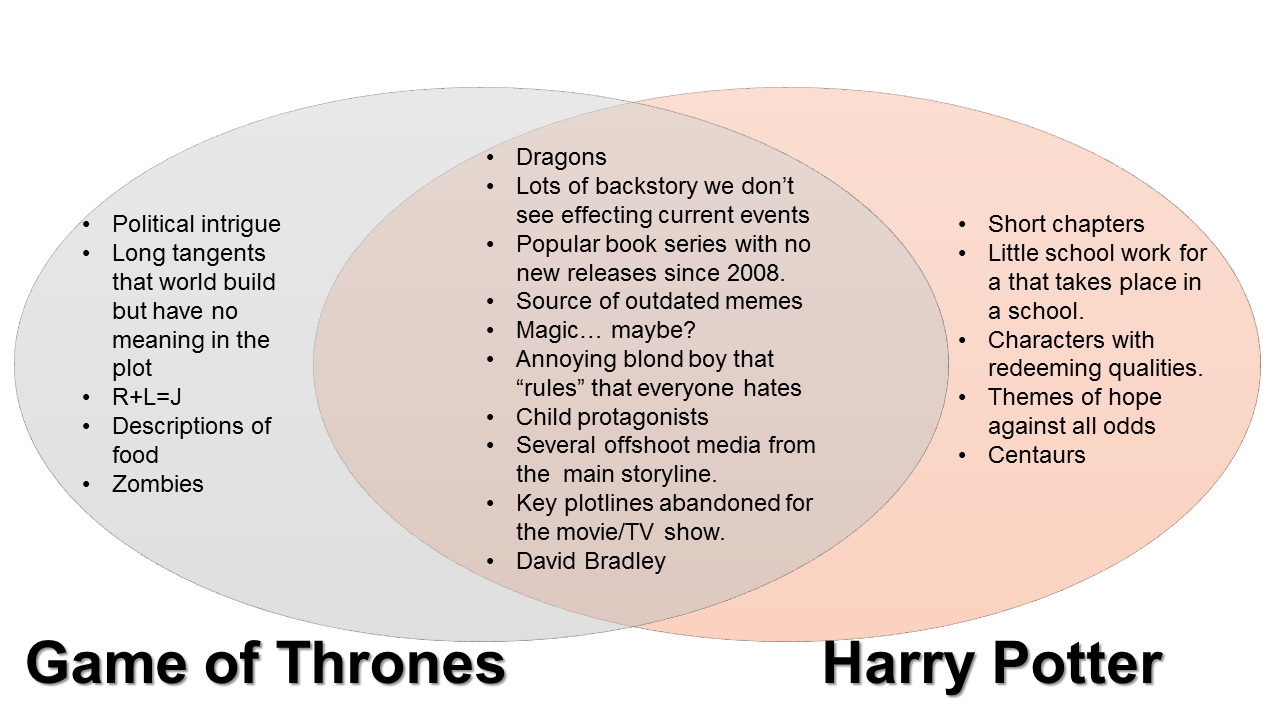Narrowing Your Topic
Once you have your list of similarities and differences, it is time to hone in on which you will use for your paper. Consider items that are interesting and relevant to your topic. Ask yourself:
- Is this relevant to your assignment?
- Is this relevant to the course?
- Is it interesting?
- Are the similarities and/or differences important enough to write about?
Relevancy and interest are key aspects of any paper. If you are writing about the book The Hobbit for your English class, a paper that discusses the topography of the Shire may not be appropriate. Similarly, if you are writing a paper on the ethics of modern day immigration control, then researching the history of Ellis Island may be inappropriate. Remember, the paper you are writing should be one that wouldn’t bore you to read.
Compare/Contrast Tools
The 5Ws and 1H can help you quickly discover similarities or differences between the items you will be writing about. Consider:
- Who did something to do with your topic?
- What happened to your topic?
- Where did your topic take place?
- When did your topic happen?
- Why did your topic happen?
- How did your topic happen?
Venn diagrams can be key for a visualization of comparing two or more items. To make a Venn diagram, simply draw a circle for each item you are comparing/contrasting and overlap them. In the central area, list the traits that all items have in common.
2 Item Venn Diagram
3 Item Venn Diagram
Charts are more useful when you have specific criteria in mind. To make a chart, list the names of items across the top of each column then list the criteria in each row. You will then have a box to describe each of the criteria for each item.
If you are talking about physical items, sometimes the above questions won’t make much sense. In this case, you’ll want to think about what these items are made up of. Consider:
- Color
- Duration
- Number
- Shape
- Size
- Smell
- Sound
- Taste
- Texture


